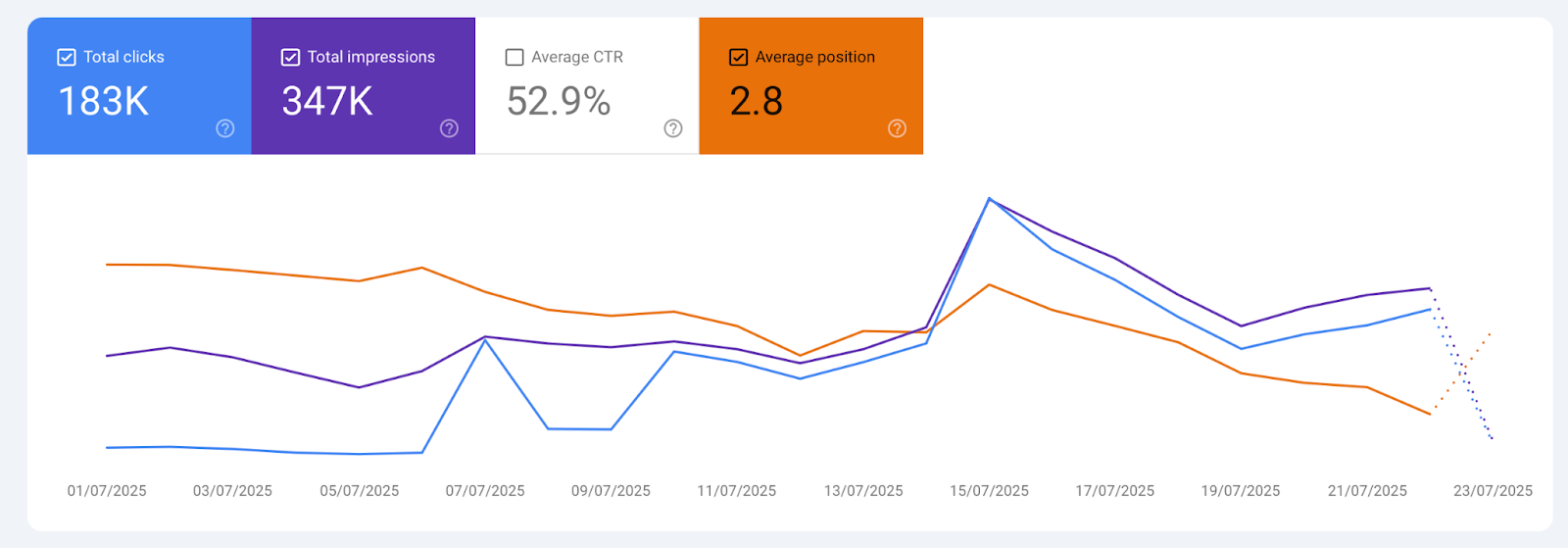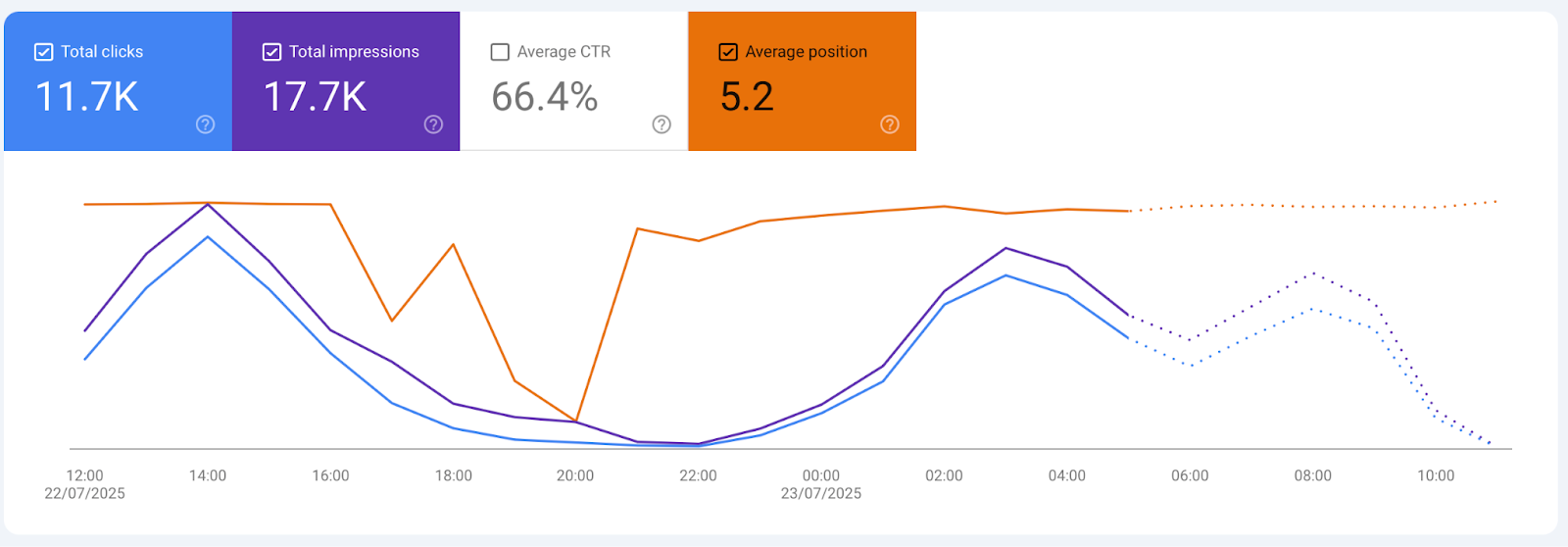When this AI Q&A platform first reached out, they had a serious visibility problem. Despite publishing over 45,000 pages of AI-generated threads and answers, most of it was invisible to search engines. Their entire content engine was effectively offline in Google’s eyes.
Fast forward a few months, and they’re now averaging 183,000 organic clicks per month, with key pages ranking for high-intent queries and consistent growth in crawl activity.
What We’ll Cover
- How we helped uncover and fix a crawlability issue that kept 45K+ pages out of Google’s index
- The specific SEO changes that contributed to 183K monthly organic clicks, up from just 67K
The Problem
The biggest issue was structural. The entire platform ran on a JavaScript-heavy Single Page Application (SPA), with all content loading inside a single <div id="root">. There was no server-side rendering and no fallback HTML. If JavaScript didn’t run, the page was empty.
This meant search engines saw... nothing after crawling the pages.
On top of that, a few other issues stood out:
- Most pages followed the same AI-generated template, with little unique value
- Important pages were missing H1 tags and had weak heading structures
- There was no schema markup to help Google understand the content
- The sitemap wasn’t helping guide crawlers to the right pages
All of this made it hard for Google to find, understand, or trust the content.
What We Did
Making Content Visible Without SSR
While the ideal fix would have been server-side rendering, the platform’s architecture made that a longer-term engineering lift. So we proposed a more immediate solution using progressive enhancement.
The strategy focused on exposing meaningful content to Google within the raw HTML, without relying on JavaScript execution.
This included:
- Reworking how page templates were structured, so titles, meta descriptions, and core content loaded with the initial HTML
- Ensuring internal links to threads, topic pages, and profiles were embedded in anchor tags rather than handled entirely by JavaScript
- Using layout shifts to show fallback HTML content first, while enhanced interactive features could still be layered on after JavaScript execution
This approach gave Google access to content from the very first crawl. Inspection tools confirmed the improvement: titles and body text were now visible, and pages began to enter the index.
Raised the Bar for Content Quality
Once visibility was addressed, the next priority was content quality.
With over 45,000 pages generated through similar AI workflows, Google was unlikely to index all of it. So we helped narrow the focus to what truly mattered.
The content strategy centered around:
- Flagging the top 5 to 10 percent of high-quality pages based on topical relevance and potential search value
- Removing low-value or repetitive pages from the index using noindex directives
- Defining minimum content requirements to prevent thin or generic outputs from going live
This shifted the platform from a quantity-first to a quality-led indexing model, improving crawl efficiency and trust.
Rebuilt the SEO Foundations
With crawlability and content addressed, we turned to the basics that were missing.
- Structured data was implemented using schema markup for the organization, key content types, and individual pages
- The sitemap was rebuilt from scratch to include only index-worthy URLs, helping Google prioritize the right pages
- H1 tags and heading hierarchies were cleaned up to provide semantic clarity
- Internal links were mapped between related threads, user profiles, and community topics to support better discovery
Together, these changes gave the platform the technical foundation it needed to scale organic traffic and appear in search with the clarity Google expects from top-tier content platforms.
Results
The platform now averages 183,000 organic clicks per month, up from 67,000 before fixing its crawlability and structure issues.

Indexing improved steadily over time as Google began discovering and understanding the content.
Today, the site sees around 11,000 clicks per day, driven by pages that were previously invisible to search engines.

Key topic areas that had no presence in search are now ranking, and high-value threads are appearing for competitive, non-branded queries.
Key Takeaways
- Technical SEO still drives results: Schema, headings, sitemaps, and internal links might feel basic, but getting them right can unlock serious traffic gains—especially at scale.
- Crawlability comes before content quality: If search engines can’t access your pages, content improvements won’t matter. Structure needs to be solved first.
- AI content needs clear quality controls: Publishing everything doesn’t work. Focus indexing on high-quality, differentiated pages that serve real value.
Ready to Unlock Organic Growth Like This?
We help high-growth teams fix visibility issues, scale content, and turn traffic into results… without bloated strategies or overcomplicated audits.
Book a call and let’s figure out what’s holding your growth back.

.svg)
.png)


%20(2).png)
%20(2).png)

%20(2).png)




.png)
.png)
